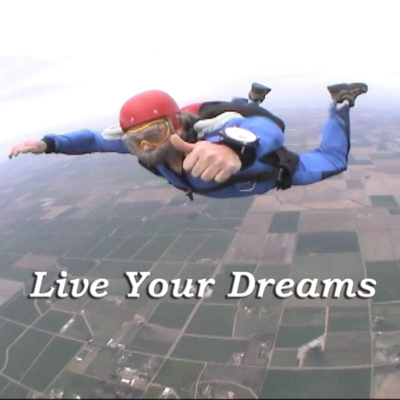Recommended Posts
I hope you have jumped several times by now and are nailing the landings. But I haven't seen you post about it so thought I'd add my 2 cents worth.
I am recovering from a broken fibula and looking forward to returning to flight. I have really thought about what I did wrong and though I don't remember the moment of impact, except for the pain, I can remember what my feet and legs were doing just before impact.
What I have realized is if I had had my toes together as well as my heals the force of the clod of dried mud I hit would have been spread over both feet and not caused the twist and upward bend that caused the break.
The other and perhaps larger error was stretching my legs to reach the ground, there by taking the bend out of my knees. Since they were not bent the force of impact locked my knees. or knee. They (it) stayed straight rather than bending to absorb the shock.
If either of these errors hadn't been made I probably would have avoided the break. If I had gotten both things right I am confident I would not have suffered any serious injury.
Like you I believe it is counter productive to obsess about all that can go wrong. But it is important to have a realistic assessment of risk and do all I can to minimize it. Sorry I broke my ankle but glad I broke the bad habits I was developing.
Fly Free
I am recovering from a broken fibula and looking forward to returning to flight. I have really thought about what I did wrong and though I don't remember the moment of impact, except for the pain, I can remember what my feet and legs were doing just before impact.
What I have realized is if I had had my toes together as well as my heals the force of the clod of dried mud I hit would have been spread over both feet and not caused the twist and upward bend that caused the break.
The other and perhaps larger error was stretching my legs to reach the ground, there by taking the bend out of my knees. Since they were not bent the force of impact locked my knees. or knee. They (it) stayed straight rather than bending to absorb the shock.
If either of these errors hadn't been made I probably would have avoided the break. If I had gotten both things right I am confident I would not have suffered any serious injury.
Like you I believe it is counter productive to obsess about all that can go wrong. But it is important to have a realistic assessment of risk and do all I can to minimize it. Sorry I broke my ankle but glad I broke the bad habits I was developing.
Fly Free
If God meant for us to fly
He'd have given us imagination!
He'd have given us imagination!
mnealtx 0
Glad you're healing up.... practice those PLF's once you're 100%!!!
Mike
I love you, Shannon and Jim.
POPS 9708 , SCR 14706
I love you, Shannon and Jim.
POPS 9708 , SCR 14706




Share this post
Link to post
Share on other sites